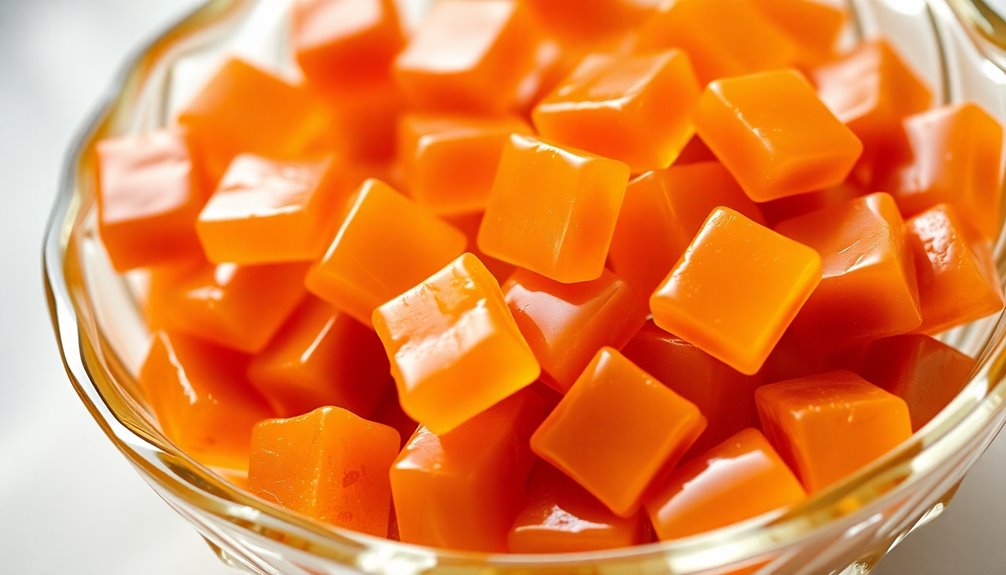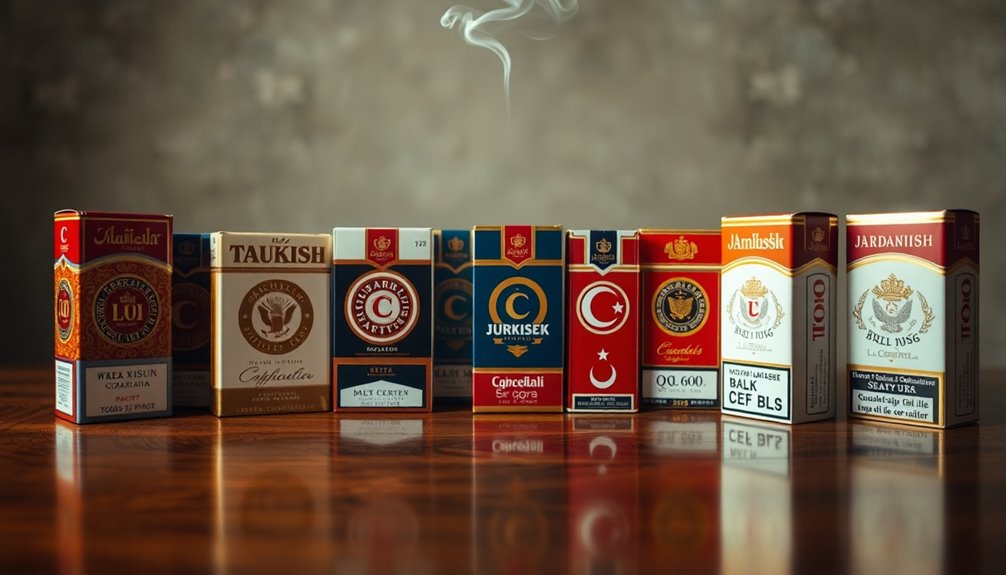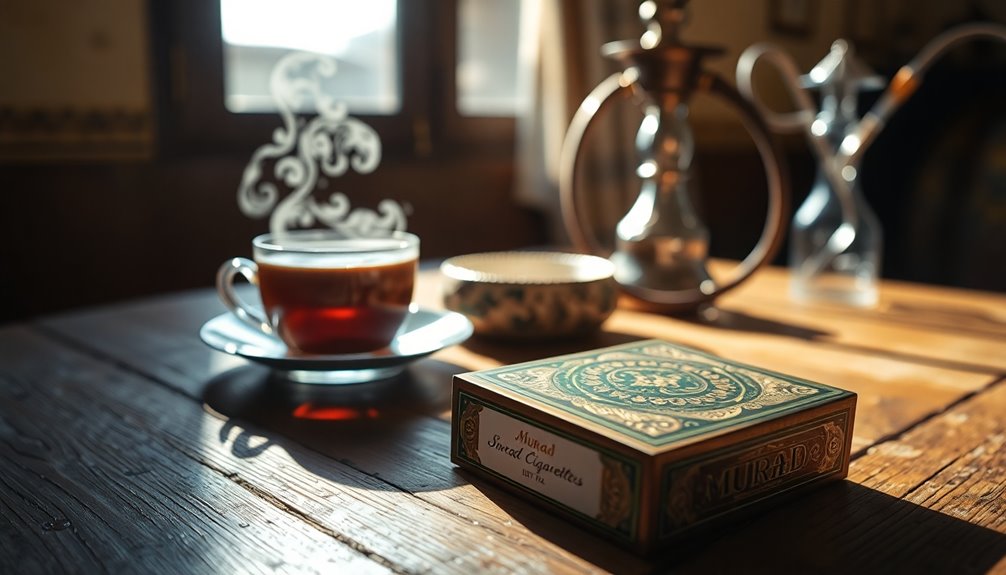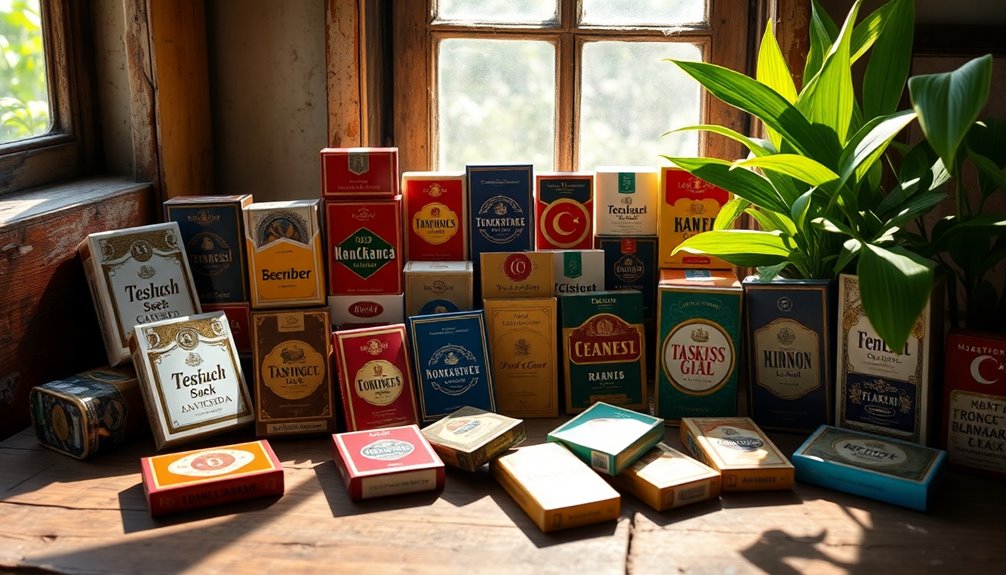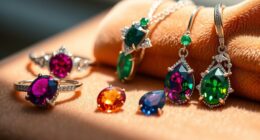Cigars from Puerto Rico let you experience true luxury in smoking. With a rich history dating back to the Taino Indians, each premium cigar showcases the island's unique Hoja Prieta tobacco. You'll savor an array of flavors, from spicy vanilla notes to hints of cocoa and espresso, all crafted by skilled artisans. The meticulous production process ensures quality and smoothness, making each puff memorable. Plus, visiting places like the Caguas Tobacco Museum offers insight into this cultural legacy. If you're curious about how these cigars have evolved and what you can expect, there's plenty more to explore.
Key Takeaways
- Puerto Rico's rich tobacco history, dating back to the Taino Indians, contributes to the unique craftsmanship of premium cigars today.
- The fertile soil and meticulous production processes enhance the flavor complexity of Puerto Rican cigars, offering a luxurious smoking experience.
- Unique tobacco varieties like Hoja Prieta provide distinctive flavor profiles, with aromas evolving from spice and vanilla to wood and espresso.
- The premium cigar market is growing, driven by rising disposable incomes and consumer preferences for unique, handcrafted products.
- Engaging with local brands and visiting the Caguas Tobacco Museum deepens appreciation for the cultural significance of Puerto Rican cigars.
History of Puerto Rican Cigars
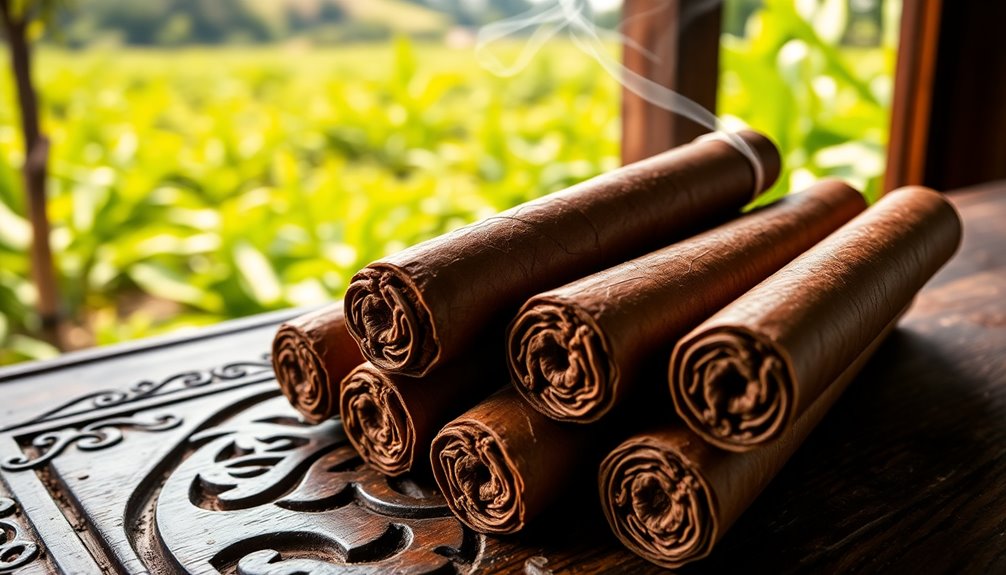
The rich history of Puerto Rican cigars traces back thousands of years to the Taino Indians, who cultivated tobacco long before European influence. They used stone molds to form and cure cigars, incorporating them into their ceremonial activities.
You might find it interesting that the term "sikar" from the Taino language evolved into the Spanish word "cigarro." The organized Arawak tribes, including the Taino, traded tobacco throughout the Caribbean, recognizing its value not just for smoking, but also as a spice and for medicinal uses.
When Christopher Columbus arrived in Puerto Rico in 1493, he observed the indigenous population smoking tobacco. By the 1570s, its popularity soared across Europe, becoming a luxury item among royalty.
Between 1460 and 1660, over half of Puerto Rico's exports consisted of tobacco products. This early demand for tobacco laid the foundation for Puerto Rico to become a key supplier of tobacco, especially during the disruptions in the Cuban tobacco industry in the late 19th century.
The Decline of the Industry

Throughout the early 20th century, Puerto Rico's once-thriving cigar industry faced significant challenges that ultimately led to its decline. The entry of the U.S. Tobacco Trust in 1899 sparked protests from local manufacturers, but their efforts were in vain. The Porto Rican-American Tobacco Company (PRATCO) quickly dominated the sector and acquired vast tracts of land, solidifying U.S. control.
Price wars between ATC and PRATCO resulted in heavy debts, while anti-U.S. sentiments fueled arson attacks on tobacco barns in the early 1930s. As global demand for Puerto Rican cigars dwindled, PRATCO filed for bankruptcy in 1939, costing 12,000 jobs over 25 years. The decline of the tobacco industry was also marked by the influence of global market fluctuations, which further exacerbated the challenges faced by local producers.
The fallout devastated local economies, particularly affecting peasant families and women who relied on tobacco agriculture. With the industry's contraction, tobacco shifted from a major economic player to a niche market.
Despite the decline, the legacy of Puerto Rican tobacco lingers on, celebrated as a symbol of resilience. Though production remains limited, a few brands like Don Collins Cigars uphold the tradition of quality, representing a small but enduring segment of the market.
Resurgence Efforts in Tobacco
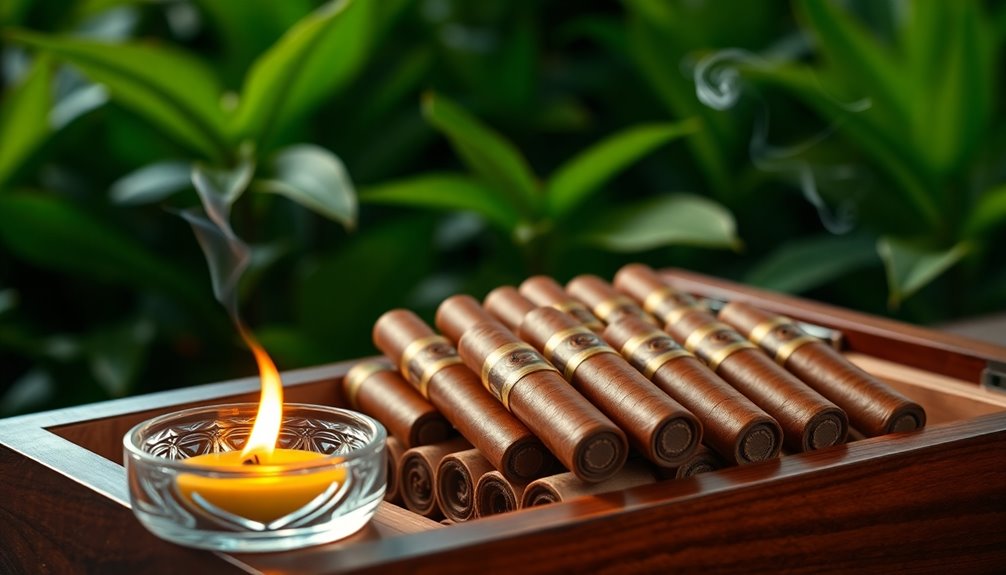
Resurgence efforts in Puerto Rico's tobacco industry are gaining momentum as producers seek to revive the traditional craftsmanship that once flourished.
While major tobacco companies like PMI and BAT claim to transform their practices by focusing on public health goals, skepticism remains rampant. You might notice that these claims often lack concrete action, as the industry's primary focus seems to be profit maximization rather than genuine change. Furthermore, no tobacco company has committed to ending conventional product sales in all markets, highlighting the industry's reluctance to fully embrace transformation.
In an attempt to maintain market presence, companies are introducing lower-risk nicotine products like e-cigarettes and heated tobacco products. They market these as healthier alternatives, but this strategy can keep nicotine addiction alive and draw in new users.
With traditional advertising restricted, the industry has pivoted to point-of-sale promotions and internet marketing, using retailer incentive programs to control product visibility.
As public health advocates push for stricter regulations and comprehensive tobacco control measures, the tobacco industry faces growing scrutiny.
Many experts view the industry's actions as 'pseudo-transformation' tactics, designed to delay effective legislation. The call for enhanced regulations and transparent practices continues, ensuring that the resurgence in Puerto Rico's tobacco industry is met with vigilant oversight.
Notable Cigar Manufacturers
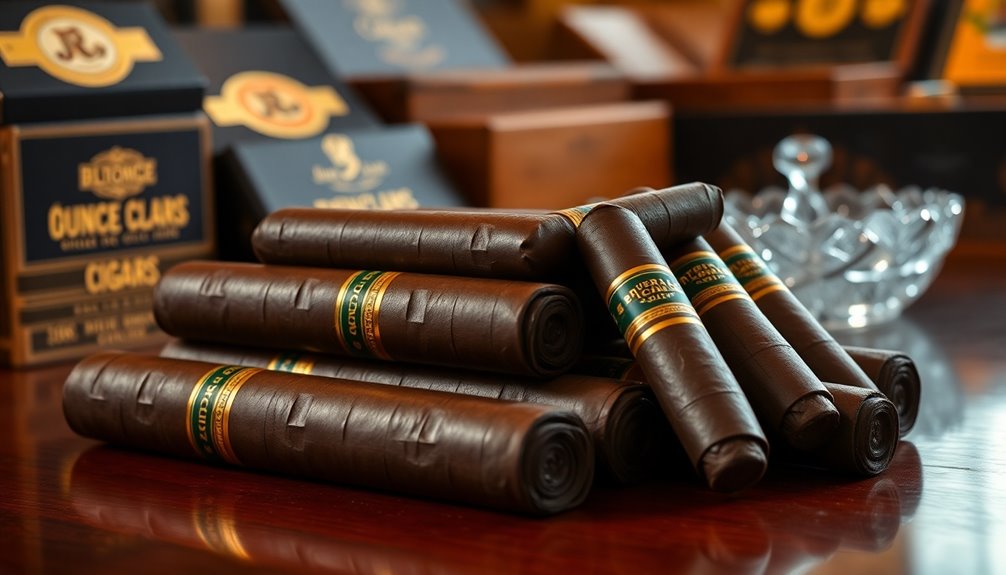
Puerto Rico's rich tobacco heritage is evident in its notable cigar manufacturers, who are committed to preserving traditional craftsmanship while adapting to modern market demands. One prime example is the Velazquez Cigar Company, founded in 1989 by Enrique Velázquez-Mora and his wife, Carmen Santiago. Their goal was to create pure Puerto Rican cigars to compete globally. Initially based in Puerto Rico, they moved production to the Dominican Republic in 1998 due to hurricanes but remain a third-generation family business. This commitment is reflected in their dedication to maintaining high-quality standards throughout the cigar production process.
Another key player is the Puerto Rico Tobacco Company, established in 1991. It boasts the Caribbean's oldest continuously operating cigar factory, hand-rolling cigars with locally-grown tobacco to ensure high quality. Their range of signature blends showcases the diversity of flavors available.
Historically, Caguas played a vital role in tobacco production, especially between 1907-1940, attracting European royalty. The influence of the U.S. market also shaped local brands, pushing manufacturers to adapt while maintaining quality.
As you explore these manufacturers, you'll appreciate how they blend tradition with modernity, enriching Puerto Rico's cigar legacy.
Premium Cigar Market Trends
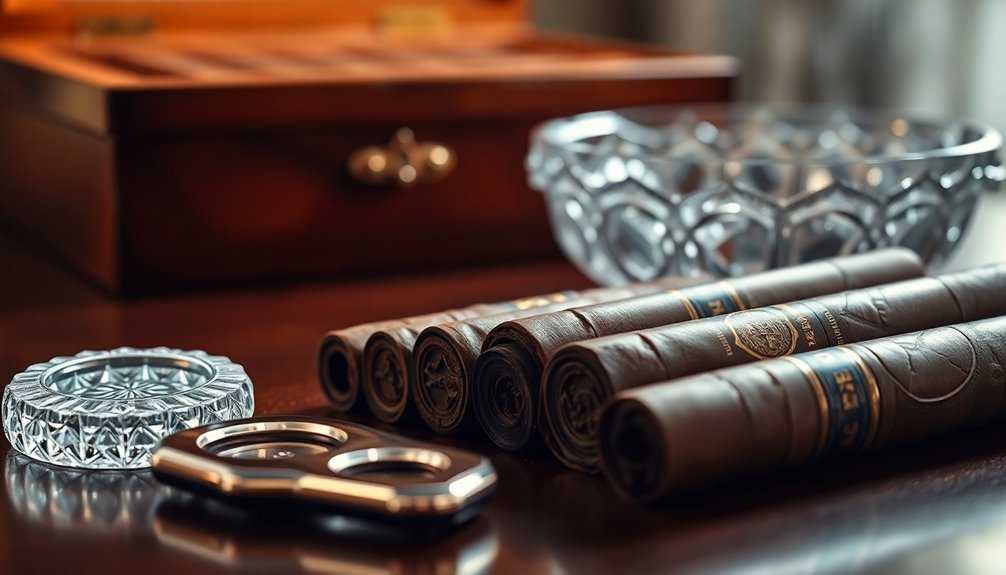
The premium cigar market is witnessing an exciting evolution, driven by rising demand from affluent consumers and a growing appreciation for quality craftsmanship. From 2024 to 2030, this segment is expected to grow at a CAGR of 3.0%, particularly due to popularity in premium clubs, hotels, and bars.
As disposable incomes rise, more sophisticated consumers are willing to spend significantly on individual premium cigars, reinforcing their status as luxury items. Additionally, the increasing market demand for Grande cigars with larger ring gauges reflects a shift towards more substantial smoking experiences.
In terms of preferences, you're likely to notice that Figurado and Toro-sized cigars are gaining traction, along with Grande cigars featuring larger ring gauges. Cigarillos are the fastest-growing segment, appealing to those seeking affordability and convenience.
Legislative changes, such as the Traditional Cigar Manufacturing Act of 2023, could also reshape the market by easing regulations, allowing for more innovative products.
Sustainability is another key trend, as manufacturers adopt organic practices and renewable energy. Consumers are increasingly drawn to high-quality, hand-rolled cigars, valuing craftsmanship and authenticity.
With these trends shaping the landscape, the premium cigar market is set for continued growth and evolving consumer preferences.
Characteristics of Puerto Rican Cigars
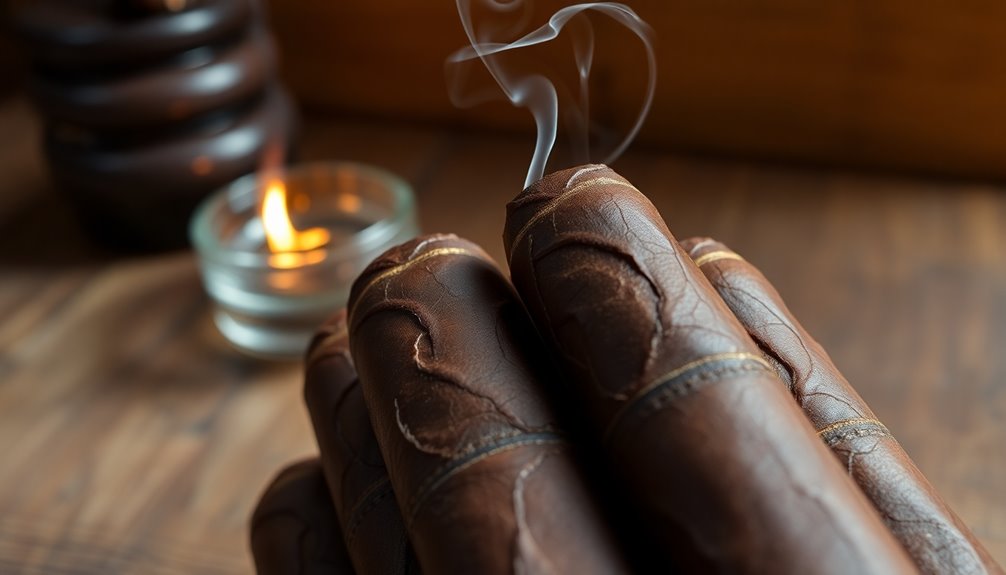
Cigars from Puerto Rico stand out in the premium market due to their unique characteristics rooted in rich tradition and meticulous craftsmanship. The tobacco plants thrive in pesticide-free environments within Puerto Rico's pristine mountains, where fertile soil and optimal climate conditions contribute to the exceptional quality of the tobacco. Local farmers, dedicated to preserving tradition, hand-harvest leaves, selecting them based on color, texture, and aroma. The fertile soil of Puerto Rico's countryside is essential for the cultivation of these premium tobacco leaves, ensuring that each plant has the foundation needed for superior flavor.
The curing and aging process further enhances these cigars. Leaves undergo a careful curing, followed by months or even years of aging in controlled environments. Master blenders monitor humidity, temperature, and airflow, ensuring each batch matures perfectly, developing depth and complexity.
Craftsmanship shines through in the hand-rolling process, conducted in historic factories by skilled artisans. They roll each cigar with precision, attending to every detail from shaping to final inspection. This commitment to handcrafted excellence guarantees consistency and quality.
Finally, rigorous quality control checks ensure that only the finest cigars reach consumers. Inspectors evaluate construction, firmness, and aroma, ensuring that each product meets the highest standards before distribution.
You can trust that every Puerto Rican cigar embodies the dedication and artistry of its makers.
Unique Flavor Profiles
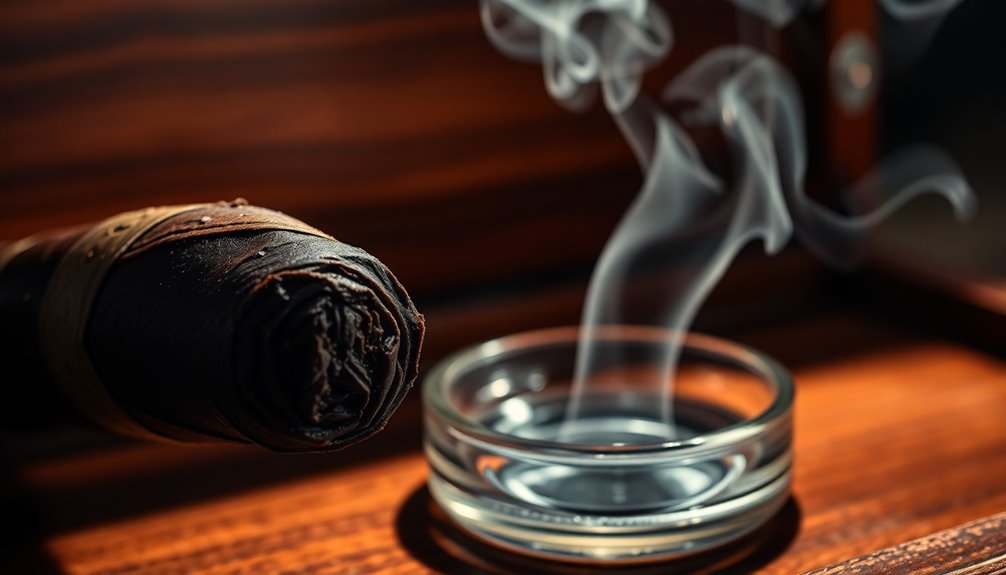
While exploring the unique flavor profiles of cigars from Puerto Rico, you'll discover a rich tapestry of tastes that reflect the island's heritage and meticulous craftsmanship. The use of Hoja Prieta tobacco, sourced from the fertile soils of Puerto Rico, brings a distinctive flavor to each cigar, with no chemicals involved in production. This results in a pure smoking experience that resonates with authenticity.
You'll notice initial aromas of spice, vanilla, ginger, and cocoa, evolving into rich flavors like wood, charcoal, and espresso, harmoniously balanced by light sweetness and dried fruit. Some cigars even surprise you with unique notes of coconut and melon. Additionally, the aging process enhances the cigar's smoothness and complexity, making it a truly memorable experience for enthusiasts of medium/full body cigars.
The rustic appearance, with exposed seams and large veins, hints at the artisanal craftsmanship behind each hand-rolled cigar. The careful curing process, often alongside vanilla beans, adds a light fragrance without altering the core flavors.
As you smoke, the complexity deepens, transforming into a flavor bomb with bold, interesting wood components. Pairing these cigars with fine spirits enhances the experience, inviting you to savor every nuance in a calm environment. This journey through flavor is what makes Puerto Rican cigars truly exceptional.
Cultural Significance of Tobacco

Tobacco's cultural significance in Puerto Rico runs deep, intertwined with the island's history and identity. It all began with the indigenous Taíno people, who practiced rolling and smoking tobacco, a tradition later embraced by European explorers like Christopher Columbus. By the 16th century, tobacco became a vital commodity in Europe, labeled as the "sacred herb" for its medicinal properties.
As tobacco use spread, Puerto Rican tobacco transformed into a luxury item for European royalty, embedding itself into the fabric of high society. The shift in market dynamics due to U.S. influence post-1898 also significantly impacted the perception and commercial viability of Puerto Rican tobacco.
In Puerto Rico, tobacco farming symbolizes national pride and resilience, particularly during the 19th century when global demand surged. The U.S. occupation in 1899 shifted the dynamics, placing local tobacco under U.S. control, yet local manufacturers and workers resisted this domination.
The struggles of these workers, including women who played key roles in production, reflect the egalitarian spirit of tobacco cultivation.
Even as the industry faced decline in the mid-20th century, the legacy of tobacco remains significant. Today, it continues to represent a rich cultural heritage, connecting Puerto Ricans to their past while shaping their identity in the present.
Economic Impact on Local Communities

The economic impact of the tobacco industry on local communities in Puerto Rico has been profound, shaping livelihoods and driving growth. After the removal of American tariff barriers post-1898, tobacco production soared, leading to increased shipments of unmanufactured tobacco to the U.S. High demand for Puerto Rican tobacco, especially during shortages of Havana leaf, significantly benefited local growers and exporters.
The industry has provided numerous employment opportunities, particularly in highland regions. By the late 19th century, both men and women honed their skills in various tobacco cultivation and manufacturing techniques, often through valuable apprenticeships. Workers' unions emerged, regulating entry into the trade and opposing mechanization, which helped maintain traditional practices. Tobacco cultivation involves 10 to 20 operations from grower delivery to export/manufacture, reflecting the complexity of the industry.
Puerto Rico's economy thrived, especially as Cuba's industry declined during its wars for independence. Municipalities like Cidra and Comerío flourished as tobacco exports surged.
Although market fluctuations and competition from the Dominican Republic posed challenges, Puerto Rican cigars remained highly regarded. Premium brands like Don Collins Cigars continue to maintain a strong presence, showcasing the enduring significance of tobacco in the local economy and culture.
Visiting Caguas Tobacco Museum

Exploring the rich history of Puerto Rico's tobacco industry leads you to the Caguas Tobacco Museum, a unique destination that highlights the cultural significance of this crop. Housed in a charming colonial neoclassical building, once a blacksmith shop, this museum—officially known as the Herminio Torres Grillo Museum of Tobacco—is the only one dedicated to tobacco's history in Puerto Rico.
As you walk through the exhibits, you'll discover the vital role tobacco played in Puerto Rico's colonial past, especially from the 1500s to the 1960s. The museum showcases relics from the tobacco industry, including replicas of a "tobacco ranchón" for curing and drying leaves. Additionally, you'll learn about the museum's efforts to preserve the cigar-making traditions that have shaped the local economy and culture.
Miniatures by Edwin Báez Carrasquillo bring the farming and cigar-making process to life.
Don't miss the chance to watch local artisans perform live demonstrations of hand-rolling cigars. With free entrance and knowledgeable guides, the museum offers a fascinating insight into tobacco cultivation and its cultural impact.
Plus, you can purchase handmade cigars as souvenirs. It's a must-visit for anyone wanting to appreciate Puerto Rico's rich tobacco heritage.
Frequently Asked Questions
What Are the Best Ways to Store Puerto Rican Cigars?
To store your cigars properly, keep them at 70°F (21°C) with humidity around 70%.
Use a hygrometer to monitor conditions and employ Boveda packs for accurate humidity control.
Make sure your humidor is lined with Spanish cedar and closed when not in use.
Avoid extreme temperatures, direct sunlight, and fluctuations in humidity.
Regularly check your humidification device and refresh it as needed to maintain the perfect environment for your cigars.
How Can I Identify Authentic Puerto Rican Cigars?
To identify authentic Puerto Rican cigars, look for specific branding and labels from reputable manufacturers.
Check that the box and labels are intact and not provided separately. Avoid clear plastic or glass packaging.
Ensure the cigars have non-uniform characteristics, indicating they're handcrafted.
Purchase from trusted sources and verify with manufacturers if possible.
Lastly, inspect for consistency in appearance and weight among cigars from the same batch to confirm authenticity.
Are There Specific Pairing Recommendations for Puerto Rican Cigars?
When pairing with Puerto Rican cigars, consider the flavor profiles. A smooth bourbon complements the rich, vanilla notes, while a bold espresso enhances chocolatey undertones.
For a sweet touch, dark rum or port balances the cigar's bitterness beautifully.
If you prefer non-alcoholic options, try a robust coffee or a malty stout to highlight the earthy flavors.
Experiment with these pairings to find what suits your taste and enhances your smoking experience!
What Accessories Are Essential for Cigar Enthusiasts?
As a cigar enthusiast, you'll want to invest in several essential accessories.
First, a good humidor maintains humidity and temperature for optimal storage.
You'll also need quality cutters, like guillotine or V-cutters, for a smooth draw.
A reliable butane torch lighter ensures an even light.
Don't forget a sturdy travel case to protect your cigars on the go, and an ashtray designed for cigars to keep your space tidy while enjoying your smoke.
How Can I Participate in Local Cigar Events or Tastings?
To participate in local cigar events or tastings, start by checking out nearby cigar lounges or shops for upcoming events.
You can join workshops that teach you about cigar rolling and tasting, like those at Finca Neo Jibairo.
Look for special events that pair cigars with local rums or themed festivals.
Joining cigar enthusiast groups online can also keep you updated on exciting local happenings.
Enjoy discovering the rich cigar culture in your area!
Conclusion
In conclusion, exploring Puerto Rican cigars offers you a glimpse into a rich history intertwined with culture and craftsmanship. Despite past challenges, the industry's revival showcases unique flavors and quality that elevate your smoking experience. As you savor these premium cigars, you also support local communities and their traditions. Don't miss the chance to visit the Caguas Tobacco Museum, where you can deepen your appreciation for this luxurious pastime and the art behind it.

